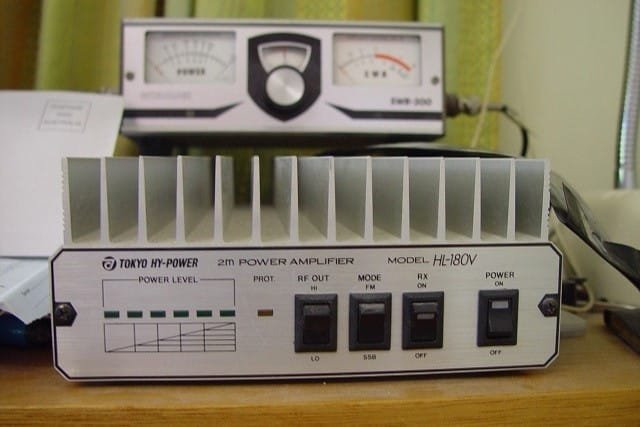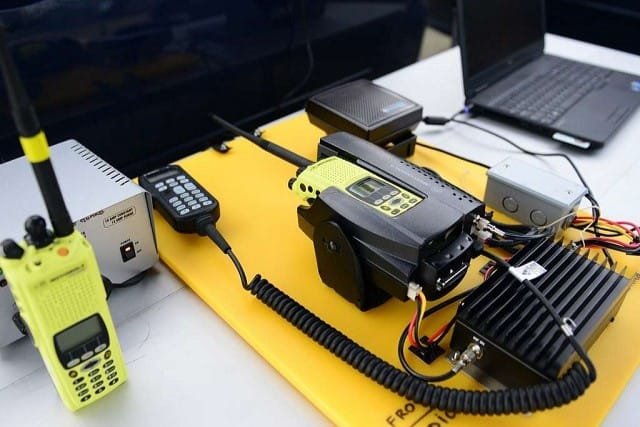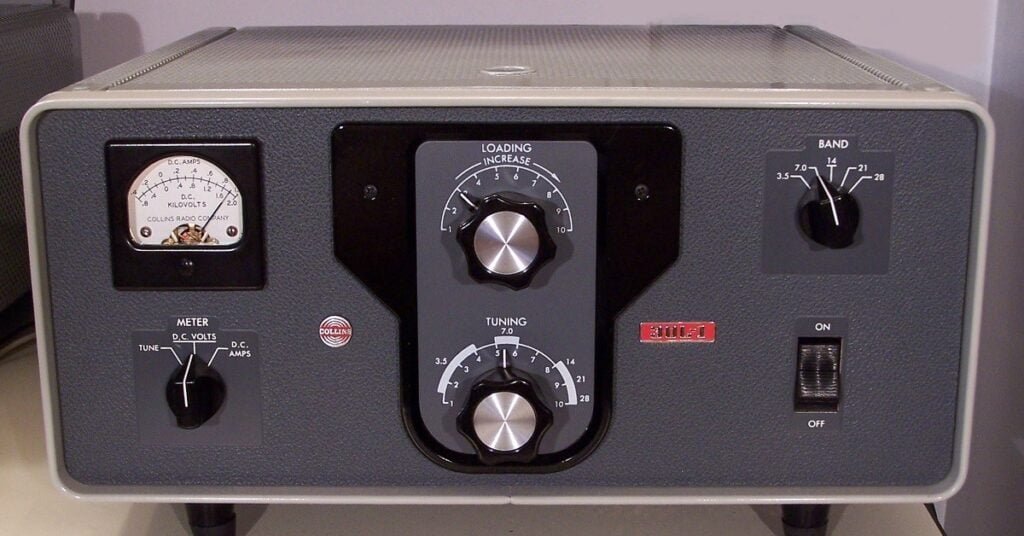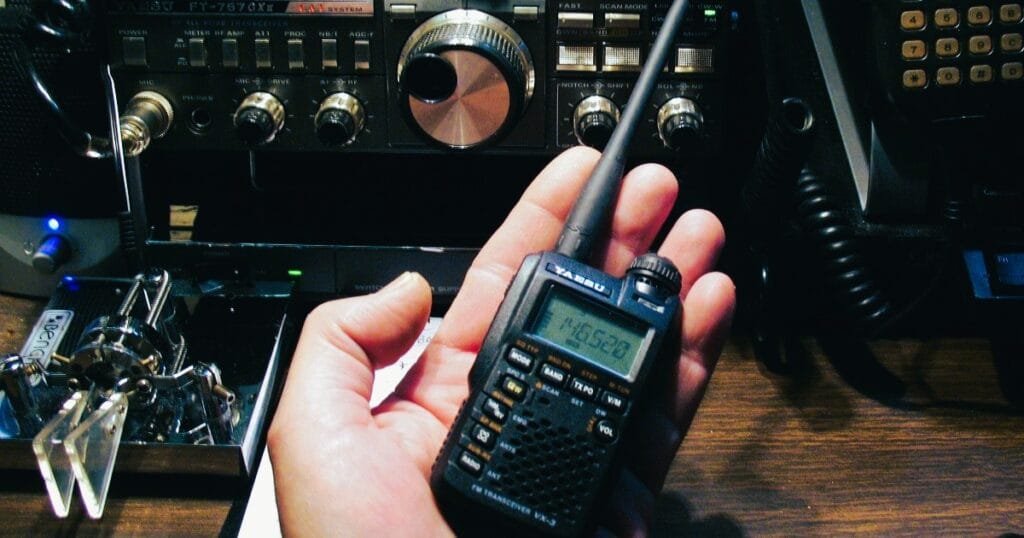Table of Contents
ToggleThe Importance of Amplifiers in Amateur Radio : A Ham Radio Review
Hey, TalkieTrail readers! If you’re an active amateur radio enthusiast, you’ve undoubtedly faced situations in which your signal lacks the desired reach or clarity. That’s where amplifiers come in—an important but sometimes ignored component in the amateur radio field. When it comes to increasing performance, adding an amplifier may make a significant difference. As someone who is continually adjusting his setup, I have discovered that a decent amplifier is the unsung hero of the airways. So, let’s get deep into the significance of amplifiers in amateur radio, and of course, I’ll throw in some “ham radio review” tips along the way.
What is an Amplifier?
Here’s the corrected sentence: “According to the rule of an amplifier, it is an electronic device that generates extra power for transmitting a radio frequency signal.” Consider it a turbocharger for your Ham radio system. Whether you’re attempting to reach a distant station or cut through dense interference, an amplifier enhances your signal so it may go further without losing clarity. In brief, it adds the necessary punch to your speech so that it is heard loud and clear.
Many amateur radio operators may not immediately think of amplifiers as a piece of equipment. Most people think of transceivers, antennas, and tuners, but amplifiers are frequently what elevate a decent setup to excellent status. If you’ve ever read a ham radio review and wondered how others get such powerful signals across vast distances, the odds are they use an amplifier.
A Brief History of Amplifiers in Amateur Radio

Early Beginnings
Amplifiers have existed since the early days of radio transmission. When wireless communication advanced in the early twentieth century, ham operators realized the importance of a better and stronger transmission. This became increasingly crucial when the distances between communication stations increased. The early amplifiers used vacuum tube technology, which enabled operators to dramatically increase their transmission power.
The Transition to Transistors
Vacuum tubes are huge, consume a lot of energy and very quickly break down in contrast to modern solutions, but where can you abruptly come to the idea head? The transistor launched an electronic revolution, beginning in the 1940s. Amplifiers were miniaturized significantly by transistors, leading to a vastly more efficient and dependable technology. That decision moved the amplifier into a price that most typical amateur radio operators were able to afford, and over the following years they got better.
Modern Amplifiers
Today, the amps we run are bigger and better (and more tech rich) than ever before. Modern amplifiers are more powerful than their predecessors and provide more control over the signal’s quality because of developments in digital signal processing and solid-state electronics.Nowadays, a lot of them come with the features built in; automatic tuning, digital filtering and software control. One thing that amazes me while doing ham radio reviews of new equipment is how far amplifier technology has come.
Admit it you want to know how today’s modern walkie-talkies were invented? Click here to find out.
Why Amplifiers Are Essential for Amateur Radio

Now that we’ve reviewed the background, let’s look at why amplifiers are so crucial to amateur radio operators. Okay, let’s see how modern amplifiers can improve the state of communication demands.
1. Enhanced Transmission Power
The primary purpose of an amplifier is to significantly boost transmission power. This allows signals to travel farther and stronger, resulting in better communication across longer distances. This is very beneficial when trying to contact distant stations or operating in settings with high interference. Whether you’re bouncing signals off the ionosphere for a long-distance connection or simply attempting to cut through local noise, an amplifier guarantees that your signal gets where it needs to be. In numerous ham radio review boards, operators who talk across countries vouch for their amplifiers.
2. Improved Signal Clarity
Amplifiers don’t simply boost the power of your signal; they also improve its clarity. Amplifiers can assist minimize background noise by enhancing weak signals, resulting in crisper broadcasts. This is particularly beneficial in loud RF situations or during contests in which numerous operators compete for the same airspace. When I do a ham radio evaluation after establishing contacts during a contest, the amplifier frequently makes the difference between a successful contact and one that is lost in the noise.
3. Better Reception: The Role of Preamplifiers
These are amps that convert (boost) signals prior to reaching your receiver. If you have ever tried to listen to a faint signal from some distant station, a preamplifier will be your best friend. In other words a preamp increases the gain of your receiver, thus amplifying weaker signals which otherwise might not be heard. If you enjoy DXing (long-distance communication), an operator may wish to use a preamplifier to help improve their ability to hear distant signals. Something my ham radio review notes always said in principle was how a good preamp can benefit an entire system.
4. Increased Range
Amplifiers also help to extend the range of your communications. An amplifier improves your transmission and receiving capabilities, allowing you to make contacts across longer distances. This is especially useful for operators who engage in DXing or contesting, when every mile counts. Imagine attempting to reach a station halfway around the world—without an amplifier, it may be a pipe dream. But if the proper arrangement is used—which involves using a strong amplifier—achieving this objective is now totally doable and within grasp.
For increasing range, a radio repeater is also a very important device. To learn more about two-way repeaters, click here.
Ham Radio Review Insights: How Amplifiers Elevate Contests

In amateur radio contests, every edge matters. Contestants are constantly seeking for methods to improve their performance, and having a high-power amplifier is frequently an essential component of that plan. Amplifiers enable you to broadcast stronger signals, making it simpler to overcome interference and create those crucial contacts. Many operators who have conducted a ham radio analysis of their contest performance frequently credit their amplifiers with giving them a competitive advantage.
Amplifiers can also help you receive weak signals more efficiently, which is especially important in contests where every touch counts. With an amplifier in your setup, you’ll be able to hear stations that other operators may overlook, allowing you to make more connections and perhaps win the contest.
Subtle but Crucial: Amplifiers and Operating Conditions
We have already come in through the back door of how inherently absolutely perfect amplifiers can be — just not always appreciated in real-world operating environments. Whether there are high levels of interference, you’re working from a remote location or just trying to reach your party at an extended distance — the amplifier provides that extra oomph required for successful communication. Giving you the tools that will help plug and play in all manner of circumstances, turning a catch chance from an opportunity hit or brick miss.
Amplifiers vs. Antenna Systems: A Balanced Approach
While amplifiers may greatly improve your signal, keep in mind that they are only one component of your complete setup. A high-quality antenna system is equally important for extending your range and improving signal quality. In fact, some operators prefer to invest in stronger antennas before incorporating an amplifier into their system. However, when combined with a robust antenna system, an amplifier may take your communication to the next level.
When doing a ham radio analysis of your own setup, it is critical to find a balance between your amplifier, antenna, and other components. Each component contributes to total performance, and ignoring one part might reduce the efficacy of the others.
Does an antenna really help extend your connection? Read here to find out.
Legal and Regulatory Considerations
So don’t go out and buy the biggest amp money can get you, here’s why. Most countries, including the U.S., regulate how much power an amateur radio operator is legally allowed to put out. This is usually in watts, and if you go over these limits the result can mean fines or losing your fist fight to get an operating license through.
When conducting a ham radio assessment of various amplifiers, be sure to verify the legal power restrictions in your nation and confirm that your amplifier meets those rules. It’s also a good idea to learn about correct operating procedures, such as minimizing interference with other users and utilizing the least amount of power required for optimal communication.
Conclusion
Amplifiers are an essential component in the realm of amateur radio, providing several advantages that can considerably improve your communication capability. Amplifiers serve a critical role in providing effective and dependable communication by increasing transmission power and signal quality, as well as improving reception and range.
As technology advances, new amplifiers provide amateur radio operators strong instruments that are more efficient and feature-rich than ever before. Whether you’re a seasoned operator or just getting started, including an amplifier into your radio setup may unlock new possibilities and improve your entire experience.
Thank you for joining us on our journey through amplifiers and their relevance in amateur radio. Don’t forget to return to TalkieTrail for additional information, reviews, and advice on all things radio communication. Have you included an amplifier in your setup? Please share your experiences in the comments section below; we would love to hear from you!


